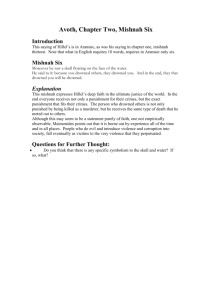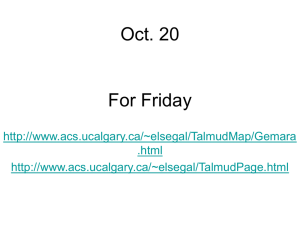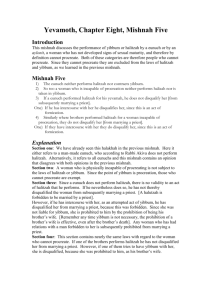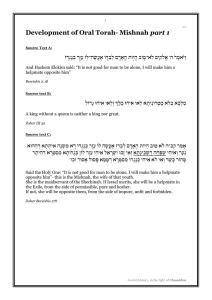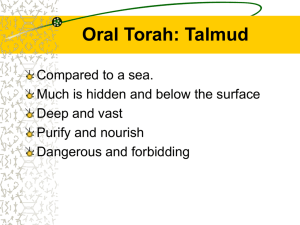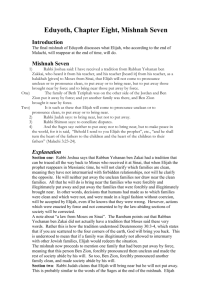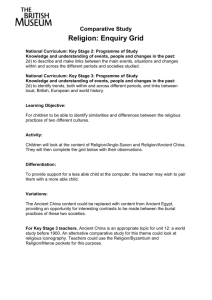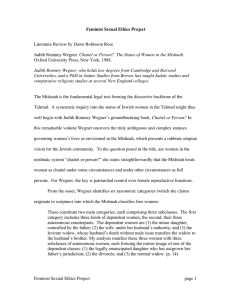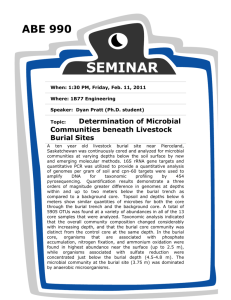Sanhedrin 6
advertisement
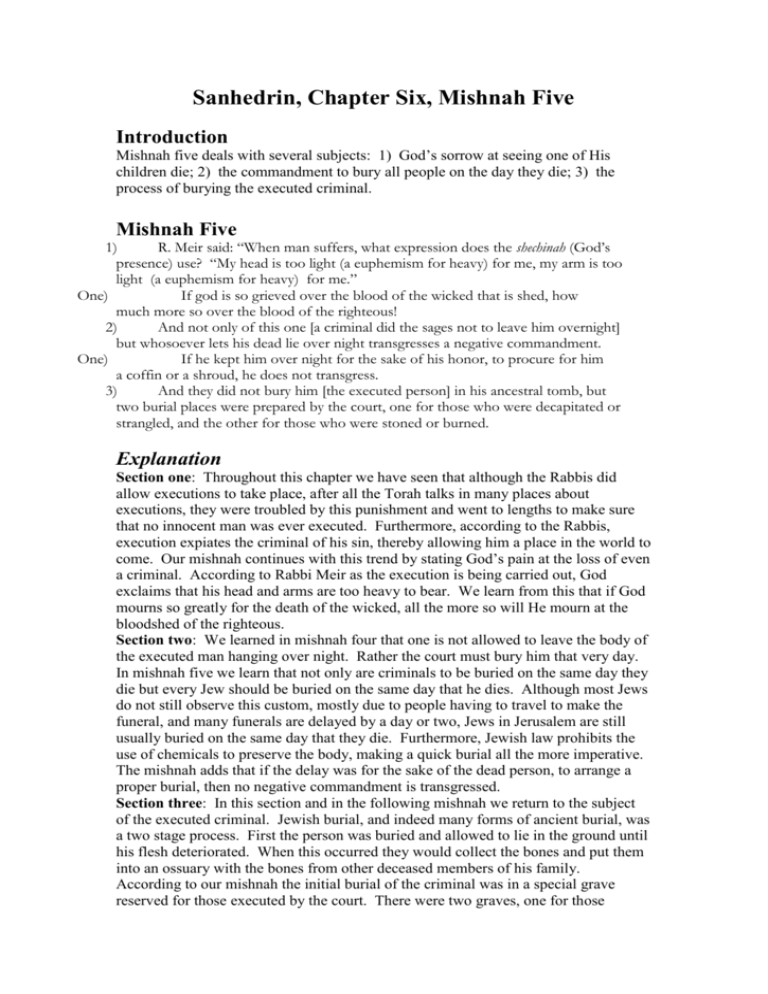
Sanhedrin, Chapter Six, Mishnah Five Introduction Mishnah five deals with several subjects: 1) God’s sorrow at seeing one of His children die; 2) the commandment to bury all people on the day they die; 3) the process of burying the executed criminal. Mishnah Five 1) R. Meir said: “When man suffers, what expression does the shechinah (God’s presence) use? “My head is too light (a euphemism for heavy) for me, my arm is too light (a euphemism for heavy) for me.” One) If god is so grieved over the blood of the wicked that is shed, how much more so over the blood of the righteous! 2) And not only of this one [a criminal did the sages not to leave him overnight] but whosoever lets his dead lie over night transgresses a negative commandment. One) If he kept him over night for the sake of his honor, to procure for him a coffin or a shroud, he does not transgress. 3) And they did not bury him [the executed person] in his ancestral tomb, but two burial places were prepared by the court, one for those who were decapitated or strangled, and the other for those who were stoned or burned. Explanation Section one: Throughout this chapter we have seen that although the Rabbis did allow executions to take place, after all the Torah talks in many places about executions, they were troubled by this punishment and went to lengths to make sure that no innocent man was ever executed. Furthermore, according to the Rabbis, execution expiates the criminal of his sin, thereby allowing him a place in the world to come. Our mishnah continues with this trend by stating God’s pain at the loss of even a criminal. According to Rabbi Meir as the execution is being carried out, God exclaims that his head and arms are too heavy to bear. We learn from this that if God mourns so greatly for the death of the wicked, all the more so will He mourn at the bloodshed of the righteous. Section two: We learned in mishnah four that one is not allowed to leave the body of the executed man hanging over night. Rather the court must bury him that very day. In mishnah five we learn that not only are criminals to be buried on the same day they die but every Jew should be buried on the same day that he dies. Although most Jews do not still observe this custom, mostly due to people having to travel to make the funeral, and many funerals are delayed by a day or two, Jews in Jerusalem are still usually buried on the same day that they die. Furthermore, Jewish law prohibits the use of chemicals to preserve the body, making a quick burial all the more imperative. The mishnah adds that if the delay was for the sake of the dead person, to arrange a proper burial, then no negative commandment is transgressed. Section three: In this section and in the following mishnah we return to the subject of the executed criminal. Jewish burial, and indeed many forms of ancient burial, was a two stage process. First the person was buried and allowed to lie in the ground until his flesh deteriorated. When this occurred they would collect the bones and put them into an ossuary with the bones from other deceased members of his family. According to our mishnah the initial burial of the criminal was in a special grave reserved for those executed by the court. There were two graves, one for those decapitated and strangled, and one for those burned and stoned. (These are the four types of execution mentioned in the mishnah, as we will learn in the next chapter). Questions for Further Thought: What is the connection between section one and section two? In other words, why does the mishnah discuss the need for a speedy burial of noncriminals here as opposed to mishnah four?
